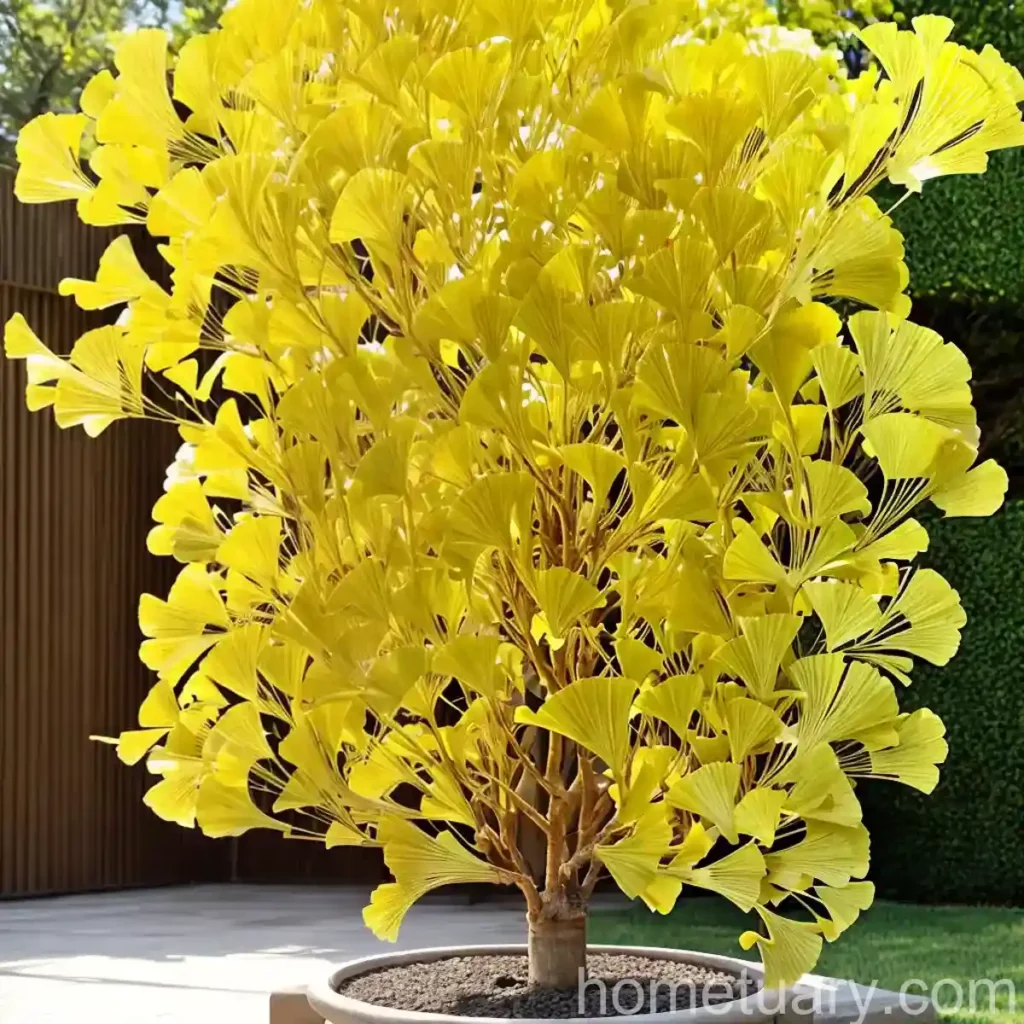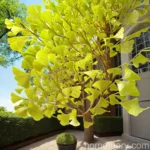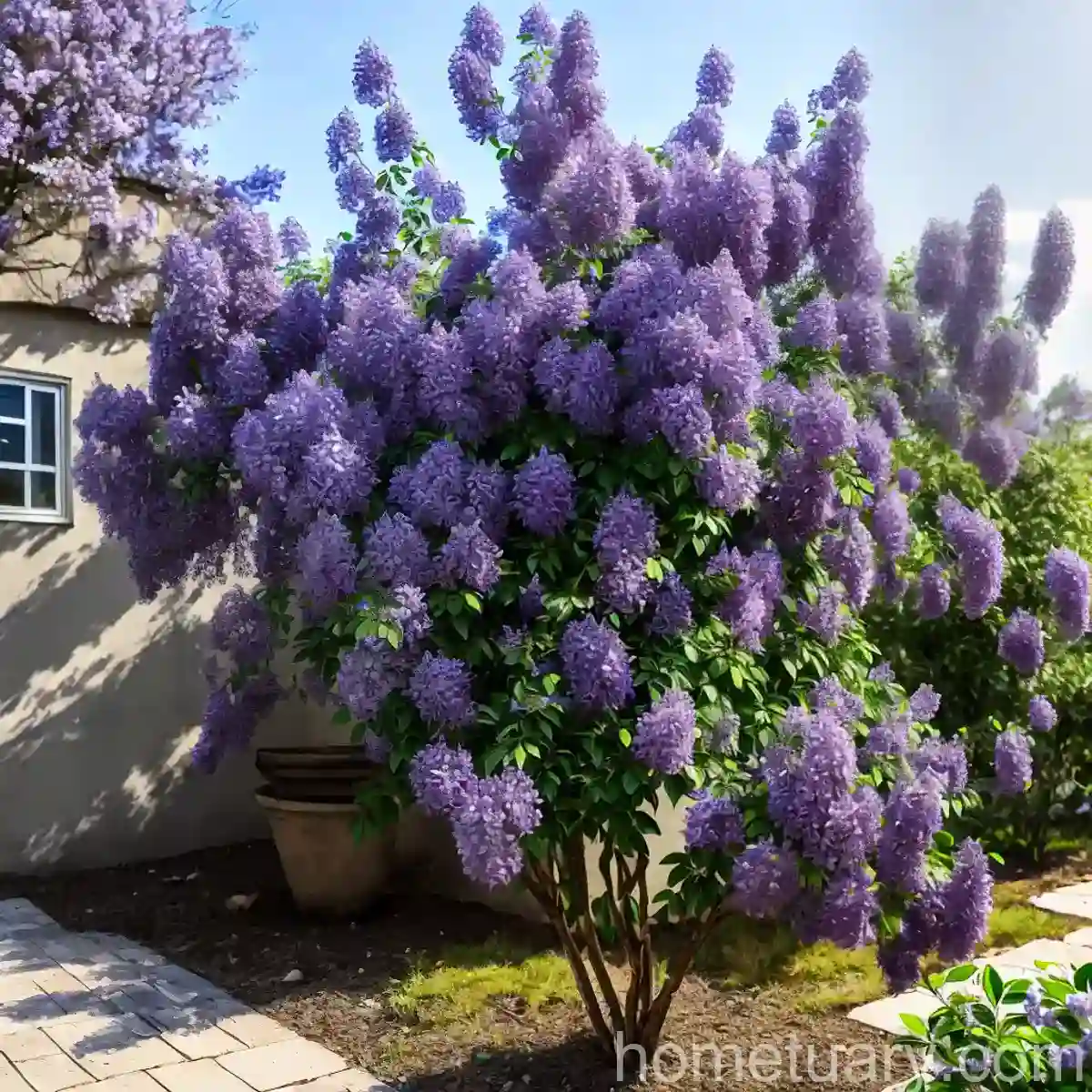The Enigmatic and Elegant Ginkgo biloba ‘Shangri-La’
The Ginkgo biloba ‘Shangri-La,’ commonly known as the maidenhair tree, is a captivating and intriguing plant that has captivated the hearts and minds of plant enthusiasts and researchers alike. This unique cultivar of the Ginkgo biloba tree possesses distinctive characteristics, making it a fascinating subject for exploration and study. In this comprehensive guide, we will delve into the various aspects of this remarkable plant, from its cultural requirements to its uses, management, and ecological significance.
What is the Plant: Ginkgo biloba ‘Shangri-La’?
The Ginkgo biloba ‘Shangri-La’ is a cultivar of the Ginkgo biloba tree, a living fossil that has remained largely unchanged for over 200 million years. This deciduous tree belongs to the Ginkgoaceae family and is renowned for its unique fan-shaped leaves, remarkable longevity, and exceptional resilience. The ‘Shangri-La’ cultivar is distinguished by its compact and dense growth habit, making it an ideal choice for urban landscapes, smaller gardens, and container cultivation.
Key Takeaways – Maidenhair Tree (Ginkgo biloba ‘Shangri-La’)
- Plant Name: Ginkgo biloba ‘Shangri-La’
- Common Name: Maidenhair Tree
- Scientific Classification:
- Kingdom: Plantae
- Division: Ginkgophyta
- Class: Ginkgoopsida
- Order: Ginkgoales
- Family: Ginkgoaceae
- Genus: Ginkgo
- Species: Ginkgo biloba
- Cultivar: ‘Shangri-La’
The Ginkgo biloba ‘Shangri-La’ is a remarkable specimen that warrants attention due to its unique attributes and cultural versatility. Let’s explore the key aspects of its culture, uses, and management to gain a deeper understanding of this extraordinary plant.
Culture of Ginkgo biloba ‘Shangri-La’
Cultural practices play a pivotal role in ensuring the optimal growth and development of the Ginkgo biloba ‘Shangri-La.’ Understanding its specific cultural requirements is essential for successfully cultivating and nurturing this plant.
Water
The maidenhair tree exhibits moderate water needs and thrives in well-drained soil. While it is relatively tolerant of drought conditions once established, regular watering, especially during prolonged dry spells, is beneficial for its overall health and vigor.
Sunlight
Ginkgo biloba ‘Shangri-La’ flourishes in full sun to partial shade, displaying exceptional adaptability to varying light conditions. However, for the best foliage display and growth, it is advisable to provide it with ample sunlight, particularly in northern regions.
Fertilizer
When it comes to fertilization, the maidenhair tree is generally undemanding. Application of a balanced, slow-release fertilizer in spring can suffice to meet its nutritional requirements, promoting steady growth and lush foliage.
Soil
The Ginkgo biloba ‘Shangri-La’ thrives in well-drained, loamy soil with a slightly acidic to neutral pH range. It is important to avoid waterlogged or compacted soil, as this may adversely impact the tree’s root health and overall vitality.
Pruning
Pruning requirements for the maidenhair tree are minimal, often limited to the removal of dead, damaged, or crossing branches. Formative pruning during the early years can help shape its growth and maintain a desirable form.
Uses of Ginkgo biloba ‘Shangri-La’
The Ginkgo biloba ‘Shangri-La’ offers an array of practical and aesthetic uses, making it a versatile and valuable addition to various landscapes and garden settings.
Landscape Ornamentation
With its compact size, lush foliage, and distinctive form, the maidenhair tree serves as an excellent ornamental specimen in urban landscapes, parks, and residential gardens. Its captivating golden fall color makes it an attractive focal point in the autumn landscape.
Urban Plantings
The Ginkgo biloba ‘Shangri-La’ is well-suited for urban environments, thriving in diverse conditions and tolerating pollution, compacted soil, and restricted growing spaces. Its adaptability and resilience make it an ideal choice for street plantings and urban green spaces.
Medicinal and Therapeutic Benefits
Ginkgo biloba extracts have been traditionally used in herbal medicine and are believed to possess various health benefits, including cognitive support and antioxidant properties. While the ‘Shangri-La’ cultivar shares the species’ medicinal associations, its primary usage lies in its ornamental and landscaping value.
Symbolism and Cultural Significance
With a rich history dating back millions of years, the Ginkgo biloba holds cultural and symbolic significance in various traditions and societies. Revered for its longevity and resilience, it is often associated with themes of endurance, hope, and adaptability.
Propagation of Ginkgo biloba ‘Shangri-La’
Propagation of the Ginkgo biloba ‘Shangri-La’ can be achieved through several methods, each offering its own advantages and considerations.
Seed Propagation
While relatively slow, seed propagation is a viable option for reproducing the ‘Shangri-La’ cultivar. It involves collecting ripe seeds from female trees, planting them in a well-draining medium, and providing suitable conditions for germination and early growth.
Cutting Propagation
Softwood or hardwood cuttings can be utilized to propagate the maidenhair tree, though the success rate may vary. Careful attention to the timing, hormone application, and environmental conditions is crucial for achieving favorable results.
Grafting
Grafting onto suitable rootstocks can expedite the establishment of the desired traits and characteristics of the ‘Shangri-La’ cultivar. This method offers a more efficient and reliable means of reproducing the unique qualities of this particular Ginkgo biloba variety.
Popularity of Ginkgo biloba ‘Shangri-La’
The Ginkgo biloba ‘Shangri-La’ has garnered considerable popularity among horticulturists, landscape designers, and gardening enthusiasts due to its numerous appealing attributes and cultural adaptability.
Factors Contributing to its Popularity:
- Urban Tolerance: Its ability to thrive in urban settings and withstand common urban stressors has positioned it as a preferred choice for city plantings.
- Compact Growth Habit: The ‘Shangri-La’ cultivar’s compact nature makes it well-suited for smaller landscapes, gardens, and container cultivation, catering to a broader audience of gardeners with limited space.
- Distinctive Foliage: The attractive fan-shaped leaves and striking golden fall coloration contribute to its visual appeal, drawing attention and admiration.
- Low Maintenance: With minimal pruning and fertilization requirements, the maidenhair tree offers an easy-care option for individuals seeking low-maintenance plantings.
- Cultural Significance: The historical and cultural significance of the Ginkgo biloba species, combined with the unique attributes of the ‘Shangri-La’ cultivar, adds an aura of fascination and allure to this plant.
Common Diseases of Ginkgo biloba ‘Shangri-La’
While the maidenhair tree is generally resilient, it is susceptible to certain diseases and disorders that may impact its health and aesthetic appeal. Understanding these potential threats is crucial for effective management and preventive measures.
Disease Diagnosis
- Leaf Spot Diseases: Fungal leaf spot diseases, such as Cercospora and Alternaria species, may affect the foliage, leading to spotting, browning, and premature defoliation. Proper sanitation and fungicidal treatments can help manage these issues.
- Rust Diseases: Various rust fungi can cause rust-like spots and pustules on the leaves, impacting the tree’s overall vigor. Pruning affected branches and promoting good air circulation can aid in preventing and managing rust diseases.
Environmental Stressors
- Pollution Stress: Urban pollution and environmental contaminants can exert undue stress on the maidenhair tree, leading to foliar damage and reduced vitality. Regular gentle washing of the foliage and appropriate site selection can mitigate pollution-related stress.
Physiological Disorders
- Chlorosis: Iron chlorosis may occur in alkaline soils, resulting in yellowing of the leaves due to iron deficiency. Acidifying the soil and applying chelated iron can alleviate chlorosis symptoms and restore leaf coloration.
Common Pests Affecting Ginkgo biloba ‘Shangri-La’
The Ginkgo biloba ‘Shangri-La’ may encounter various insect pests that can compromise its health and aesthetic appeal, necessitating vigilant monitoring and control strategies.
Common Insect Pests
- Aphids: These sap-feeding insects can infest the foliage, leading to distorted growth and honeydew secretion. Natural predators, horticultural oils, and insecticidal soaps offer effective aphid management options.
- Mites: Spider mites and other mite species may induce stippling and webbing on the leaves, potentially causing significant damage. Miticides and cultural practices to enhance beneficial mite populations aid in controlling mite infestations.
Boring Insects
- Ginkgo Biloba Borer (Agrilus biloba): The larvae of this wood-boring beetle tunnel into the trunk and branches, potentially causing structural damage and weakening the tree. Inspection, removal of infested wood, and insecticidal treatments can help manage this pest.
Botanist’s Tips for Ginkgo biloba ‘Shangri-La’
As a plant scientist, it is essential to provide practical insights and recommendations to ensure the successful cultivation and management of the Ginkgo biloba ‘Shangri-La.’
- Site Selection: Choose a well-drained location with ample sunlight for optimal growth and foliage development.
- Soil Preparation: Prioritize soil quality and structure, ensuring good drainage and a slightly acidic to neutral pH for the best results.
- Watering: Implement a consistent watering regimen, particularly during establishment and dry periods, to support healthy growth and leaf retention.
- Integrated Pest Management: Emphasize proactive monitoring, cultural practices, and targeted treatments to manage pests and diseases while minimizing environmental impact.
- Mulching: Apply a layer of organic mulch around the base of the tree to retain soil moisture, regulate temperature, and suppress weed growth.
Fun Facts about Ginkgo biloba ‘Shangri-La’
- Oldest Living Tree Species: Ginkgo biloba is often referred to as a “living fossil” due to its ancient lineage and persistence across geological time.
- The Ginkgo’s Resilience: Ginkgo trees famously survived the atomic bombing of Hiroshima, with several specimens near the blast epicenter being among the few living organisms to endure the catastrophic event.
- Culinary Uses: Ginkgo nuts, produced by female trees, are consumed in various cuisines and hold cultural significance in certain traditions.
- Environmental Benefits: Ginkgo biloba trees contribute to urban biodiversity and ecological sustainability, offering food and shelter for diverse wildlife populations.
Links to External Resources
To further explore the diverse aspects of the Ginkgo biloba ‘Shangri-La,’ consider referring to the following external resources for additional insights and in-depth information:
- American Public Gardens Association
- Royal Horticultural Society – Ginkgo biloba Cultivars
- Missouri Botanical Garden – Ginkgo biloba
- Plant Information Online – Ginkgo biloba ‘Shangri-La’
- The Morton Arboretum – Ginkgo biloba
- University of Florida IFAS Extension – Ginkgo biloba in the Urban Landscape
The maidenhair tree, Ginkgo biloba ‘Shangri-La,’ stands as a botanical marvel, captivating the imagination with its resilience, beauty, and historical legacy. As we continue to unravel its mysteries and celebrate its enduring presence, let us cherish the timeless elegance of this extraordinary plant. Whether gracing urban streetscapes or adorning private gardens, the ‘Shangri-La’ cultivar continues to inspire and enchant all who encounter its enchanting presence.















